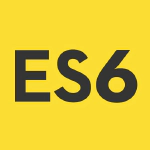Ralf is a software engineer with a history as Eclipse committer and project lead.
In recent years, he devoted himself to JavaScript technologies and helped pulling off the Tabris.js project.
Ralf holds a Master’s degree from the University of Tübingen.
 The latest version of JavaScript (ES2015, or commonly called ES6) is
The latest version of JavaScript (ES2015, or commonly called ES6) is 


